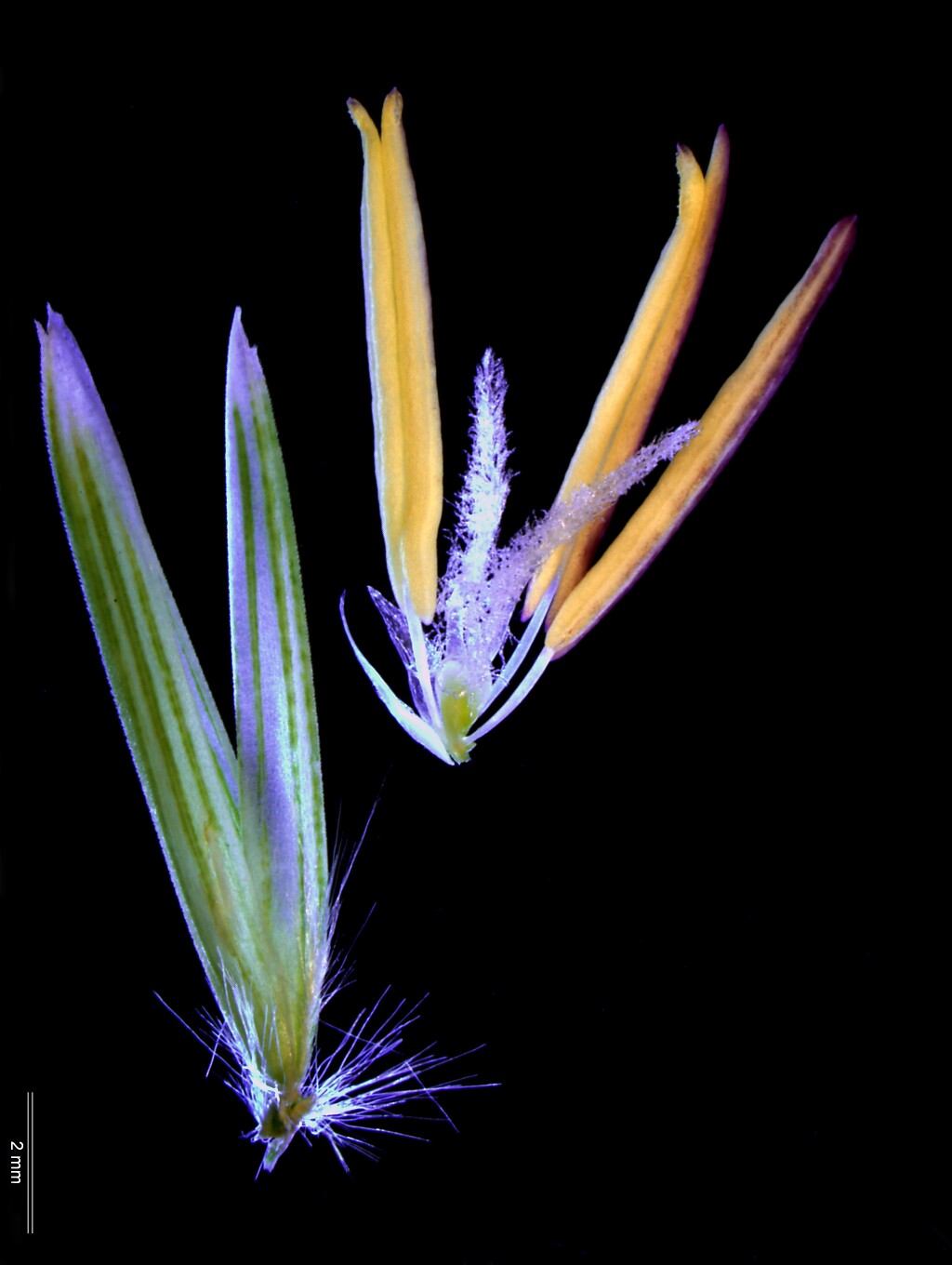Calamagrostis arenaria
(L.) RothCulms erect, to 120 cm high. Leaves produced in tufts along rhizomes, often forming dense swards; blade tough, tightly inrolled, to 70 cm long and 2.5 mm diam. (to 6 mm wide when flattened out), smooth and glabrous on the outer surface, prominently ridged and densely short-pubescent within; sheath smooth and glabrous; ligule firm, narrow, acute or deeply bifid, 1–3 cm long. Inflorescence dense, cylindric, occasionally interrupted toward base, 8–25 cm long and 1–3 cm wide; glumes narrow, acute, 12–14 mm long, weakly keeled; lemma lanceolate, shorter than glumes by 1–4 mm, awn c. 0.5 mm long, inserted c. 1 mm below apex, callus hairs silky, 2–3 mm long; palea narrower and slightly shorter than lemma. Flowers Sep.–Feb.
GleP, Brid, VVP, GipP, OtP, WaP, EGL, EGU, WPro, OtR, Strz. *Brid, *EGL, *EGU, *GipP, *Glep, *OtP, *OtR, *VVP, *WaP, *WPro. Naturalised in all States except NT, Qld, also North America, southern Africa, New Zealand. Native to western European coasts. Widely planted as a dune stabilizer, but now naturalised on sandy beachfronts almost throughout the Victorian coastline, and often replacing native Spinifex sericeus.
 Spinning
Spinning